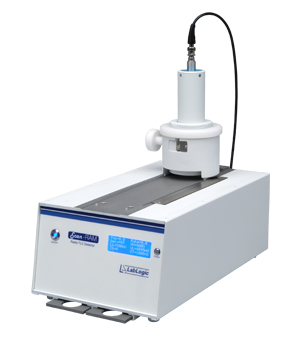LabLogic's Scan-RAM helps simplify labelled radiopharmaceutical production at New Cross Hospital
06/08/2013

The Scan-RAM is proving to be an indispensable instrument for hospital radiopharmacy departments throughout the NHS.
New Cross Hospital in Wolverhampton has been using a Scan-RAM for almost two years and according to production manager Wendy Sanders, it has been well worth the investment.
Wendy’s team uses the instrument with a 1' NaI detector for RCP (Radiochemical Purity) testing of Tc-99m labelled radiopharmaceuticals. In addition to the NaI detector the group has also purchased one of LabLogic’s plastic scintillation detectors for work with high energy Beta emitters such as Y-90. Although this detector is not being used at present it can simply be interchanged with the NaI when necessary to give the group the flexibility to work with other nuclides in future.
“The Scan-RAM is really saving us a lot of time compared with the old ‘cut and count’ method” says Wendy. ”I simply run a TLC, lay it on to the scanning bed and start my method in Laura. It is so much easier than cutting and counting separate strips and running manual calculations.”
In addition to the time saving, the Scan-RAM gives a ‘real-time’ view of the products, starting materials and any impurities. “I can easily see that the separation has happened how it should and also if there are any impurities,” says Wendy. “Using the old ‘cut and count’ method you are relying upon a couple of numbers in a calculation giving out a figure with a pass/fail threshold. You do not see what has happened to the chromatography. I would be just snipping a TLC strip in half and hoping for the best.”
Wendy is equally enthusiastic about the Audit Trail and Data Export functions of both the Scan-RAM and Laura. She says “It is great that that you can see whether people are working properly, analysing the samples consistently and editing the protocols. You cannot do this with ‘cut and count,’ you just have to assume that everyone is doing it to the same standard.”